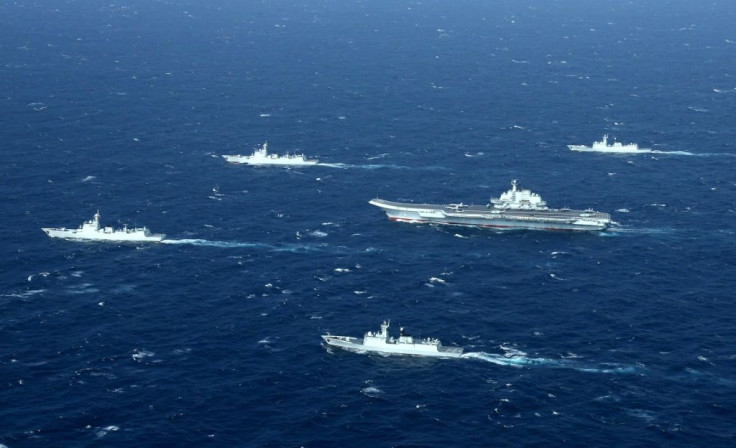Taiwan Invasion Buildup? China To Base Type 075 Amphibious Assault Ship In Hainan
KEY POINTS
- The Type 075 can be converted into landing platforms to aid in airstrikes against Taiwan
- The assault ship, China's largest, can carry 30 helicopters and hundreds of troops
- Beijing recently carried out a large military exercise in the provinces bordering Taiwan to simulate an invasion
China is likely to deploy its first Type 075 ship in the South China Sea, possibly to strengthen its capabilitis for an attack on Taiwan, which Beijing considers a breakaway province.
The amphibious assault ship — currently berthed in Sanya on the southern island of Hainan as shown by satellite images obtained by Washington think tank Centre for Strategic and International Studies — may be tasked with monitoring the Taiwan Strait and the South China Sea, according to War Industry Black Technology, a social media account run by a former PLA official, the South China Morning Post said in a report.
It also quoted a military source as saying the first and second of the three Type 075s would be deployed to the South Sea Fleet, because ports in the east, like the one on the Fujian coast, are too small to accommodate big ships like these. Yulin Naval Base, in Sanya, is believed to be Asia’s largest.
The assault ship, China's largest and the world's third-largest, can carry up to 30 helicopters and 900 troops, who could smash through Taiwan's defenses much faster, the Chinese military magazine Modern Ships has reported.
According to Lu Li-shih, a former instructor at Taiwan’s Naval Academy, the vessels could be converted into landing platforms to aid in air strikes against Taiwan, in the event of an invasion. "The PLA’s armed helicopter squadrons would need flexible transition landing platforms for refuelling and other logistic support. The Type 075 in the south would be the best option," he added.

The satellite images showed that the first Type 075 had sailed into disputed waters in the South China Sea for its second round of trials. The PLA Navy’s website said it had conducted a nine-day live-fire drill in the South China Sea recently but did not specify whether the Type 075 was involved.
China has stepped up provocative actions in the Taiwan strait and in waters around the island in recent times. Last month alone, over 50 PLA aircraft had entered Taiwan's air defence zone. In his recent visit to a PLA Marine Corps base, Chinese Premier Xi Jinping openly exhorted marines to prepare for war.
A large-scale military exercise was held on Oct. 10, in the provinces bordering Taiwan to simulate an island invasion, coinciding with Taiwan’s National Day. Besides shadowboxing PLA aircraft, Taiwan also had to recently fight off Chinese dredgers that steal sand. The South China Morning Post cited observers as saying it is another intimidation tactic by Beijing.
Still many experts think China's military drills around Taiwan aren't a sign of imminent attack. The Diplomat, in a recently published piece, said foreign policy voices in the U.S. are now openly debating whether the country should commit to defending Taiwan in the case of an attack. It said China "neither has the ability to launch a successful full-scale invasion, nor the motive to risk a conflict with the United States," and even called the recent acts of aggression a sign of weakness.
The last time China has resorted to such provocative actions was in 1996, when the PLA fired several missiles into the seas around Taiwan. But the U.S. responded with the biggest display of American military might in Asia since the Vietnam War, causing the Chinese to acknowledge their inability to stop U.S. forces from coming to Taiwan's assistance.
But the PLA has since built bigger and better weapons including the so-called carrier killer missiles which purportedly can keep U.S. carrier-based out of strike range in the event of a war.
The PLA Navy has also engaged in a rapid build-up, making it much more capable than ever in its history.
© Copyright IBTimes 2025. All rights reserved.





















